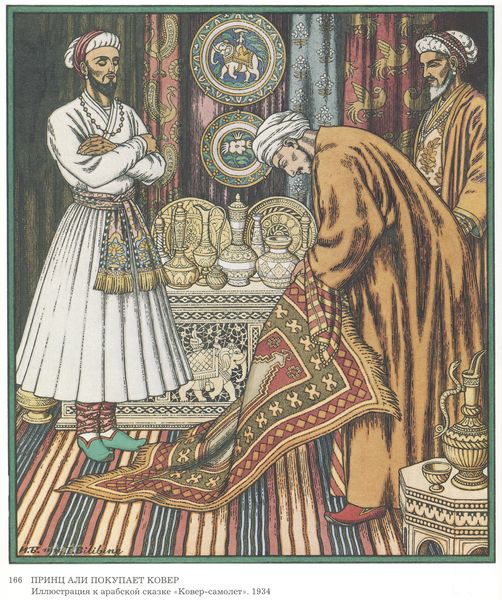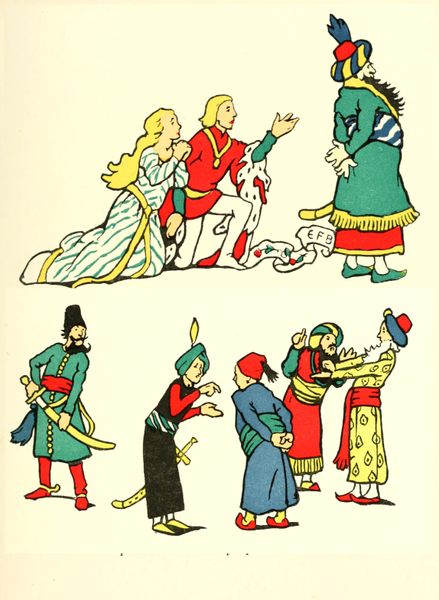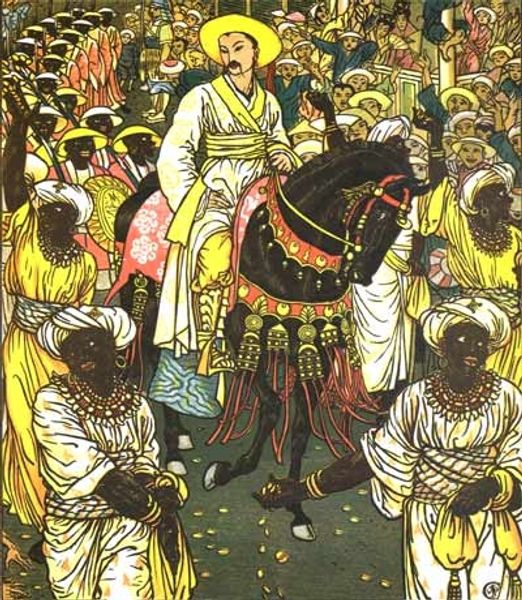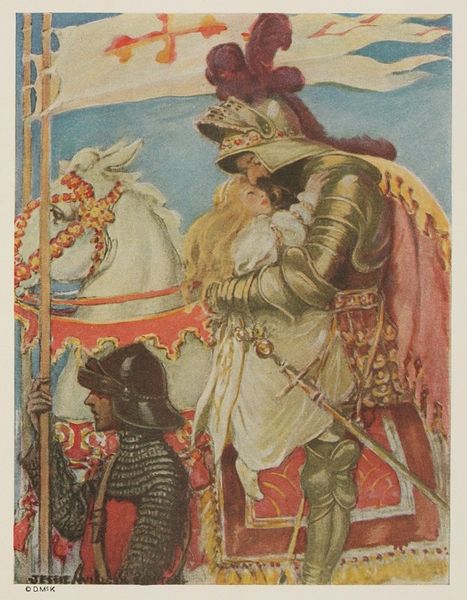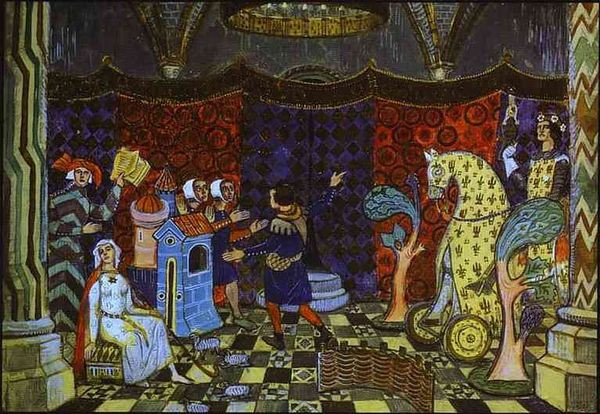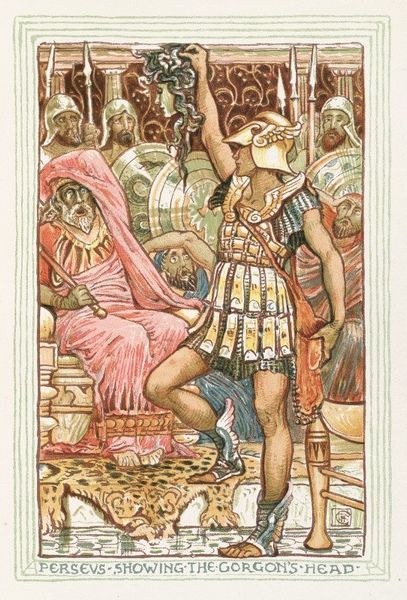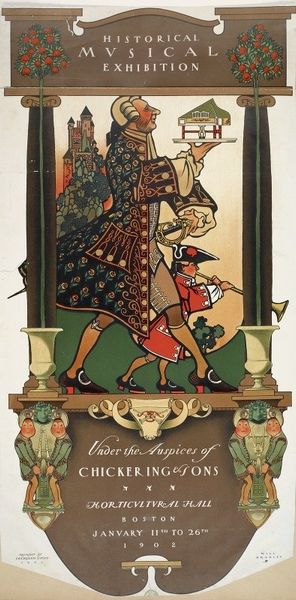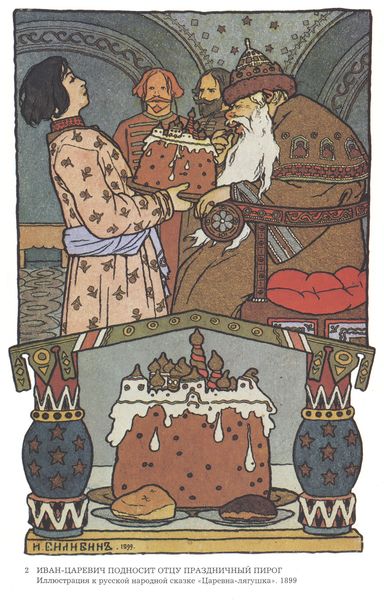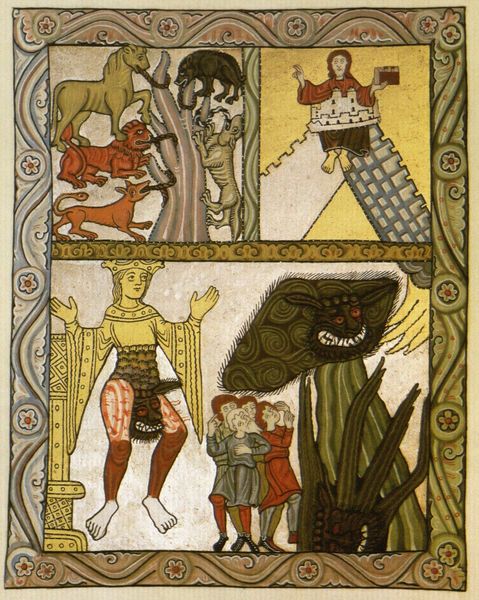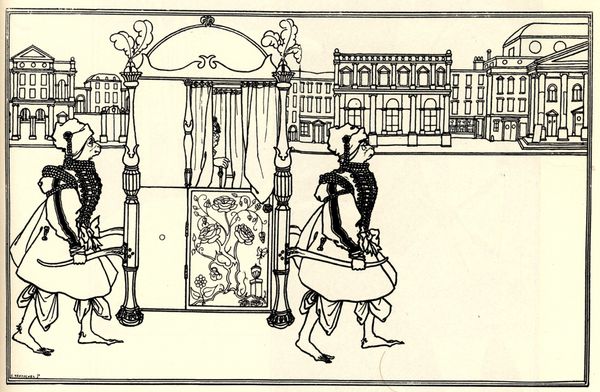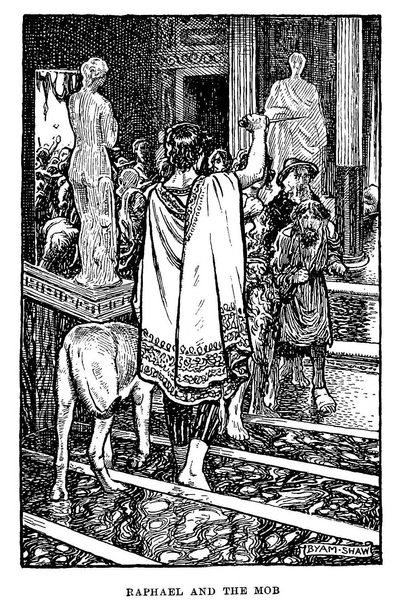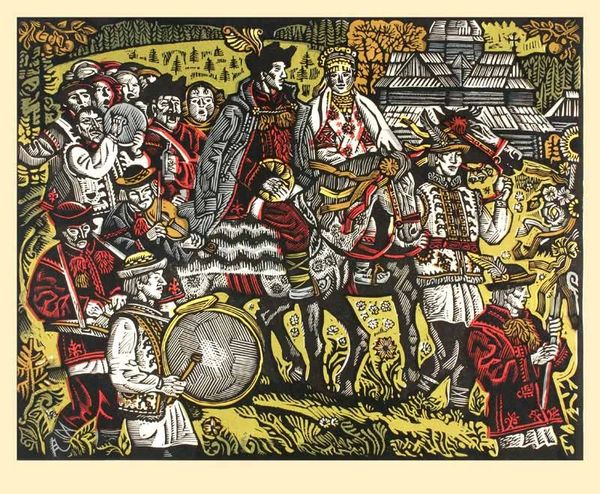
drawing, paper, ink
#
drawing
#
art-nouveau
#
narrative-art
#
paper
#
text
#
ink
#
folk-art
#
symbolism
#
russian-avant-garde
#
comic style
#
comic art
Copyright: Public domain
Editor: This is Ivan Bilibin’s 1909 ink and paper illustration for the tale “Wooden Prince” by Alexander Roslavlev. There’s such a captivating use of detail, with distinct stylization that gives the illustration a real sense of otherworldly folk art. What do you see in this piece, in terms of the symbols? Curator: Notice how Bilibin weaves together imagery of the puppet theater with motifs drawn from old Russian folk tales. What does the central figure of the ‘Wooden Prince’ evoke for you? Think of Pinocchio, perhaps. Editor: Right, a sense of artifice. He appears frozen, separate. Curator: And consider the significance of the goat. In many cultures, the goat is a symbol of abundance, but also of trickery and the irrational. Does its presence shift your understanding of the illustration's narrative? Is it blessing or critique? Editor: I see your point. Its bleating visage undermines any straightforward celebratory reading. Curator: Bilibin cleverly layers multiple visual languages. We have the visual echoes of medieval manuscript illumination mixed with sharper, Art Nouveau lines. Do these create tension or harmony for you? Editor: A bit of both. The linear detail suggests control, yet the combined symbols hint at chaos bubbling beneath. Curator: Precisely! What appears charming on the surface has darker undercurrents. He is definitely using cultural memory and giving it a spin. Editor: That tension between order and implied chaos makes this far more engaging. I'll look for Bilibin's work now that I understand this layering. Curator: Me too; it's always great when artworks present so much cultural context to think about.
Comments
No comments
Be the first to comment and join the conversation on the ultimate creative platform.
